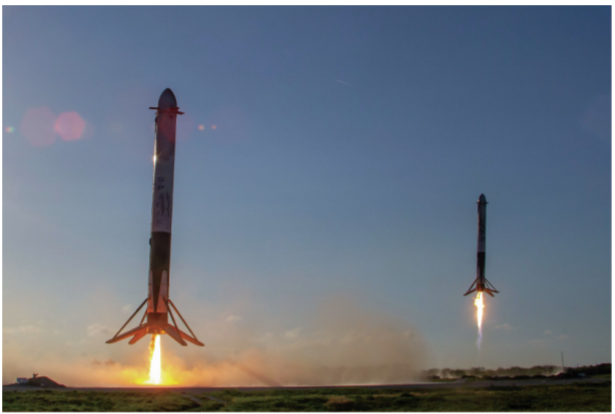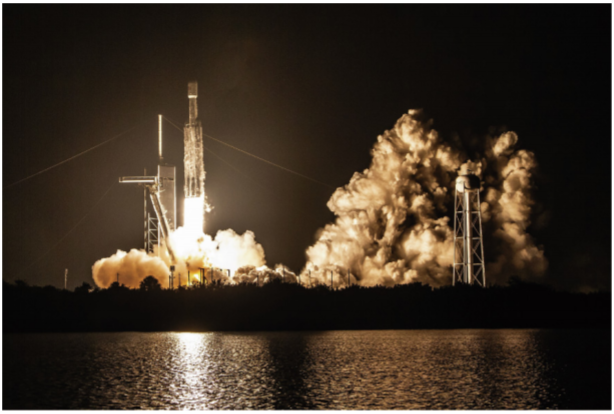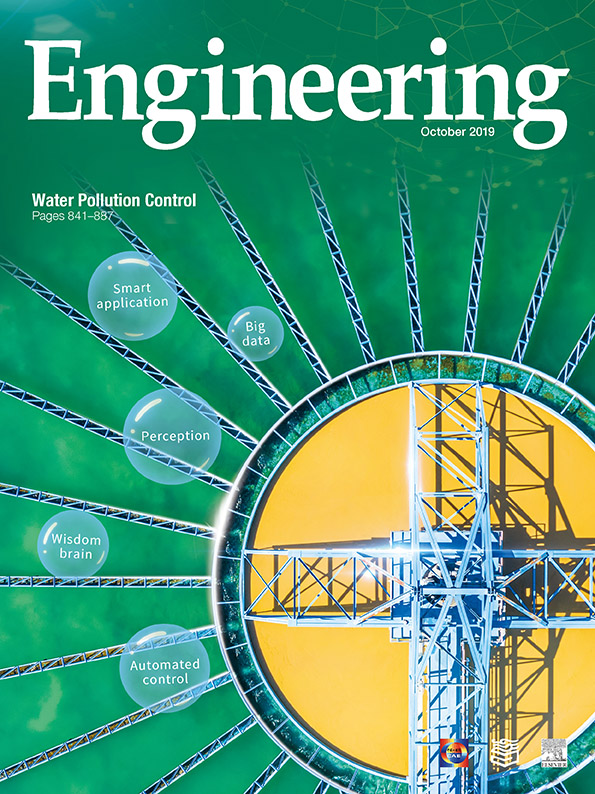With a roar that shook observers several kilometers away, the Falcon Heavy rocket lifted off from the US National Aeronautics and Space Administration (NASA)'s Kennedy Space Center in Florida on the evening of 11 April 2019. A few minutes later, the rocket's two side boosters, or cores, which one writer described as resembling giant candlesticks, returned to Earth and settled onto circular landing pads near the launch site (Fig. 1) [1]. Soon after, the third, center core touched down on a ship off the coast [2].
《Fig.1》

Fig. 1. The two side boosters of the Falcon Heavy touch down in Florida shortly after the rocket’s launch. Credit: courtesy of SpaceX (public domain).
The April launch was the first practical mission for the Falcon Heavy, currently the world’s most powerful rocket. Built by SpaceX, the Hawthorne, California-headquartered company founded by billionaire entrepreneur Elon Musk, the rocket placed a 6000 kg communications satellite into orbit [3]. The flight also demonstrated another of the Falcon Heavy's selling points—some of its components are recyclable. ”We have never seen anybody try to land and reuse all three cores,” said Laura Forczyk, head of the space consulting firm Astralytical, based near Atlanta, Georgia, USA. “It's the most capable rocket that currently exists,” she said. And its relatively low cost could make space launches economical for more companies, countries, and government agencies.
Combining three boosters from SpaceX's Falcon 9 rocket, the first stage of the Falcon Heavy generates nearly 2.3 × 107 N of thrust. These cores, along with a second stage that produces another 9.34 × 105 N of thrust, give the rocket the ability to carry about 64 000 kg into low Earth orbit, more than twice the payload of its nearest rival, the Delta IV Heavy from the United Launch Alliance, which can lift 28 000 kg [4]. However, the Falcon Heavy cannot match the lift capacity of the most powerful rocket of all time, the Saturn V, which transported astronauts to the Moon in the 1960s and 1970s. Now out of service, the Saturn V could propel a payload of 118 000 kg into low Earth orbit.
Each of the Falcon Heavy's three launches to date showed off new capabilities. Its initial flight, on 6 February 2018, was a demonstration and carried only a cherry red Tesla sports car as a payload (Tesla is another of Musk's companies) [5]. The April 2019 mission confirmed that the rocket could put a satellite into space and recovered all three cores. The third launch on 25 June 2019 (Fig. 2) was the first to reuse the side boosters from a previous flight. In addition, as one of the fairings that protects the cargo during the flight tumbled toward the ocean, a ship outfitted with a huge net managed to catch it, which should allow this $6 million USD component to be used again on a later flight [6]. During this mission the Falcon Heavy released 24 satellites into three different orbits, a much more complex maneuver than those it performed in its first two missions [7].
《Fig.2》

Fig. 2. The Falcon Heavy rocket lifted off from NASA’s Kennedy Space Center in Merritt Island, Florida, on 25 June 2019. Credit: courtesy of SpaceX (public domain).
Although the Falcon Heavy delivered its cargoes on these missions, retrieving all of the reusable components of the rocket has proved challenging. On two of the flights, the central core booster failed to land on the recovery ship and the fairings fell into the sea instead of into the net that was supposed to catch them. Even though the central core did set down on the recovery ship during the second mission, it fell overboard during the return to port and sank [8].
Reusability comes with a cost, however, said Alton Romig, Jr., Executive Officer of the US National Academy of Engineering in Washington, DC, and former Vice President and General Manager of the Lockheed Martin Aeronautics Company Advanced Development Programs (better known as the Skunk Works). Reusability reduces the lift capacity of the rocket because the boosters have to save some of their fuel to return to Earth. “A trade-off decision has to be made between the cost savings of reusability and additional useful payload that could be placed in orbit,” he said.
Nonetheless, said Forczyk, ”The reusability is ground-breaking, and it should decrease launch costs overall.” SpaceX's current list price of $90 million USD per launch attracted clients such as the US National Oceanic and Atmospheric Administration (NOAA), NASA, the US Air Force, and the Arab Satellite Communications Organization (Arabsat) for its two 2019 missions. At least four more launches are currently planned, although the next one may not occur for more than a year [9].
That companies such as SpaceX are performing a greater share of rocket launches is a positive development, Romig said, because it will help hold down costs. Using private companies to deliver payloads into low Earth orbit “ought to be cheaper in the long run” than relying upon government-sponsored entities, he said.
Although Musk initially proposed using the Falcon Heavy to carry astronauts around the Moon, whether the rocket will contribute to space missions, as opposed to just lifting cargoes into orbit, remains uncertain. It currently is not equipped for a crew and therefore could not ferry astronauts to the International Space Station or the Gateway that NASA plans to put into orbit around the Moon, Forczyk said. But with the Delta IV rocket close to being retired and other potential challengers still in development, the Falcon Heavy has the large payload market mostly to itself, she said. At the earliest, Blue Origin, the spacecraft company headquartered in Kent, Washington, USA, and started by Amazon founder Jeff Bezos, will launch its New Glenn rocket in 2021 [10]. And the Chinese Long March 9 rocket, which will carry more than twice the payload of the Falcon Heavy, is not expected to start flights for more than 10 years [11]. Forczyk said the biggest competitive threat could come from SpaceX itself, which is developing a larger, two-stage prototype, the Super Heavy rocket and Starship spacecraft, which could make the Falcon Heavy obsolete [12].













 京公网安备 11010502051620号
京公网安备 11010502051620号




